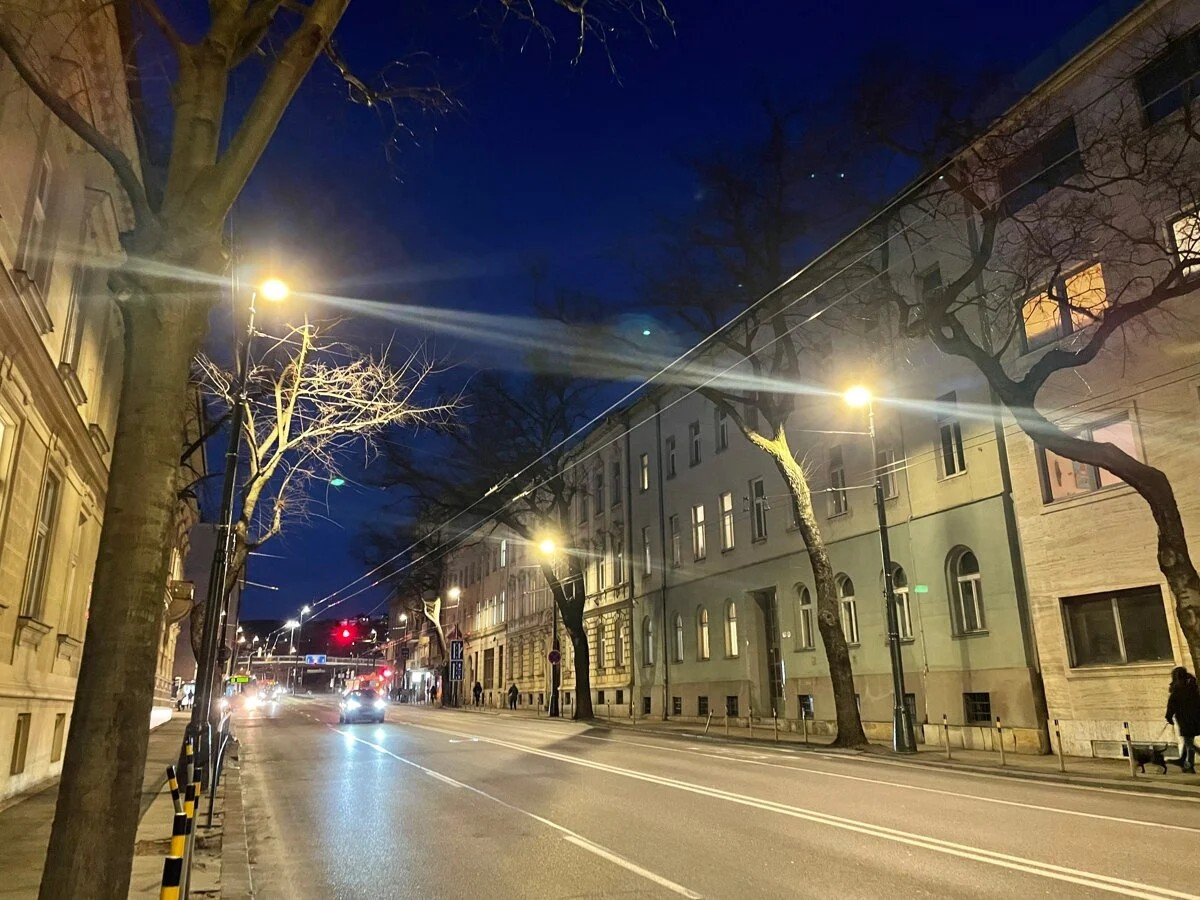Bratislava’s streets will soon shine with warmer light as the city replaces the cold white lighting that currently dominates its main roads. The change comes in response to public criticism, and several areas have already undergone upgrades.
The Metropolitan Institute of Bratislava (MIB) has updated its Principles and Standards for Public Lighting. Under the new guidelines, warmer lighting with a colour temperature of 3000 K will now be used on major roads, replacing the previously recommended 4000 K neutral white. On secondary roads, the standard will be even lower – 2200 K.
“It’s a compromise between energy efficiency and visual comfort,” the manual explains.
In urban forest parks, the city plans to use orange lighting at 1800 K, similar to traditional sodium vapour lamps. This light, with minimal blue-spectrum content, is chosen to reduce light pollution and minimise the impact on the natural environment. This change has already been implemented in parts of the city, including Štefánikova, Šancová, Karadžičova, Dostojevského Rad Street, Vajanského embankment, and Rázusovo embankment.
“Technology has advanced quickly – even warmer lights are now more energy-efficient than in the past,” said city spokesperson Peter Bubla. “That’s why we can afford this shift while still achieving projected energy savings.”
Positive public feedback
Since 2023, the municipal company Technické siete Bratislava has been responsible for maintaining public lighting. It has committed to systematically replacing outdated fixtures with energy-efficient LED lights. While environmentally and financially advantageous, these lights initially emitted overly intense white light, which affects both human behaviour and wildlife.
Though white light may enhance visibility, it is better suited to daytime use. Bratislava has begun replacing cold white LEDs with 3000 K warm white lights on primary and secondary roads, and even warmer tones on smaller streets. Cold white lighting is now used primarily to illuminate pedestrian crossings in accident-prone areas and should be used elsewhere only when justified.
“We’re receiving very positive feedback from the public regarding the changes,” Bubla said.
Reintroducing orange light without blue tones
Night-time exposure to white light can disrupt the circadian rhythm, the body’s natural system for regulating sleep and wakefulness. Blue light in particular suppresses melatonin production, leading to poorer sleep and weakened immunity.
The key measure here is Correlated Colour Temperature (CCT), expressed in Kelvins (K). The lower the CCT, the warmer the light and the lower the proportion of blue light it emits. For reference, a typical household bulb emits light at around 2700 K, while direct sunlight at noon reaches 5500 K.
Hynek Medřický, a researcher who studies the effects of artificial light on the brain and circadian cycles, argues that switching from neutral white to warm white is not enough.
“White light was designed for interiors – it was never intended for use in the natural world or on city streets,” Medřický said. “At night, only light that mimics the spectral quality of a sunset – with a low proportion of short wavelengths – should be used.”
Following this recommendation, MIB now suggests the use of orange light with no blue component, particularly in forest parks such as Železná studnička, Pekná cesta, and Koliba.
©Sme


 Štefánikova Street has less intensive lighting. (source: Katarína Jakubjaková)
Štefánikova Street has less intensive lighting. (source: Katarína Jakubjaková)